The woman confronting the US prison-to-deportation pipeline
Domestic abuse survivor Ny Nourn lived this pipeline. How her fight against this system became a fight for others.
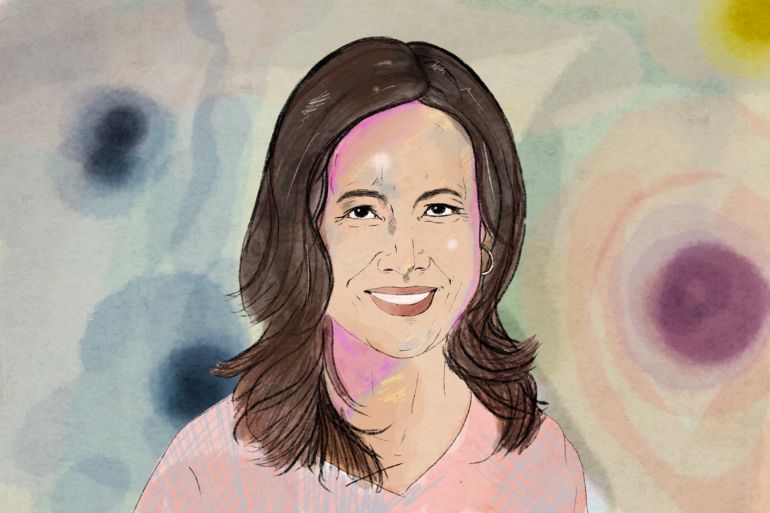
News of her client’s release sent attorney Melanie Kim scrambling to find clothes. Her client hadn’t known freedom since 2003. She needed something to wear when she left detention for the first time in 16 years.
So Kim rushed to a discount department store and grabbed what she hoped would fit: a pair of joggers and a T-shirt.
Keep reading
list of 4 itemsTen years after Chibok girls kidnapping: One woman’s struggle to move on
Poland lawmakers take steps towards liberalising abortion laws
Arizona’s top court allows near-total 1864 abortion ban to go into effect
But when Kim arrived at the Yuba County Jail in Marysville, California, the problem became clear. Kim had only ever seen her client from across glass panels, seated during brief, 30-minute visits. The clothes Kim had picked were far too big for the petite, 4-foot-11.5-inch woman with the long dark hair who now stood free before her.
“In my mind, physically she was much bigger than she actually was,” Kim recalls. It felt like a “mismatch”: how someone as small and unassuming as Ny Nourn could have had such immense effect.
The story of how Nourn, 41, first came to be imprisoned is the story of her emergence as an advocate. As the co-director of the Asian Prisoner Support Committee — and an organiser for the domestic violence advocacy group Survived and Punished — Nourn has rapidly gained a reputation as one of the most high-profile voices in the fight to end what activists in the United States call the “prison-to-deportation pipeline”.
But Nourn doesn’t just speak out about that pipeline. She has lived it herself. And in sharing her story again and again — on panels, in interviews, even for a TEDx Talk — Nourn often finds herself confronting the horrors of her past as she works to educate others about the US criminal justice system.
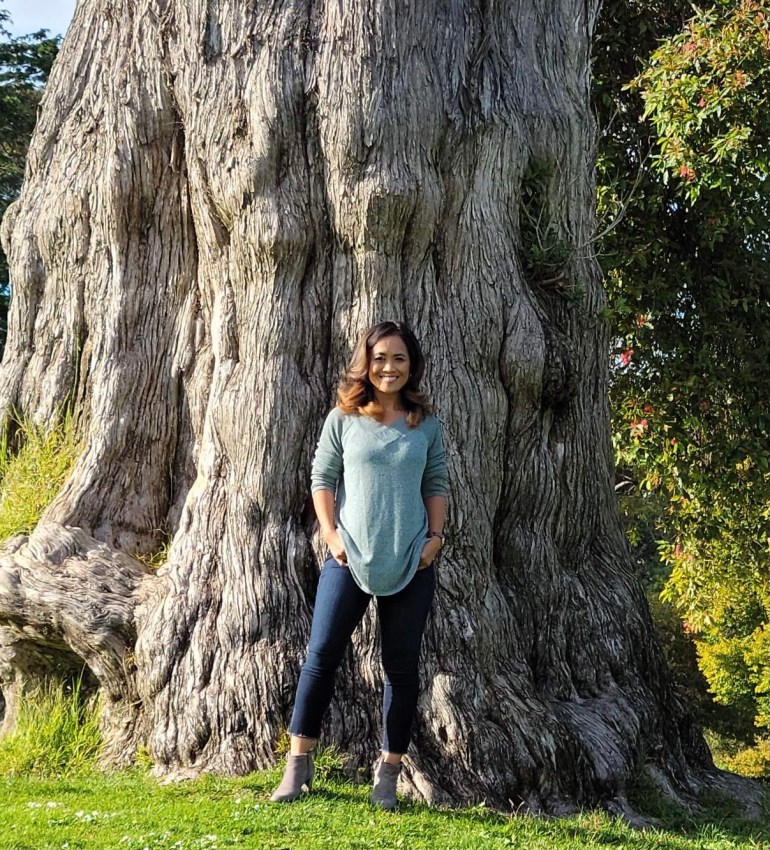
‘Born into violence’
Born in 1980 in Khao-I-Dang, a Cambodian refugee camp near the border in Thailand, Nourn remembers sorrow among her earliest memories. At age 18, her mother had fled Cambodia on foot: the genocide there in the late 1970s killed more than 1.7 million people.
She raised Nourn alone in those early years. Nourn’s father had abandoned them both when Nourn was only one.
“I have very vague, sad memories — the majority of the time, being hungry, always needing my mother. She was working in the rice fields,” Nourn says. The world felt so huge at the time. Now, looking back, she considers herself “born into violence” — the trauma of the genocide leading to the trauma that followed.
At age five, Nourn left with her mother for the United States, where they settled first in Florida, then in California. There, in the city of San Diego, her mother married a fellow refugee from Vietnam, a man who worked as a mechanic. He too had suffered: he had been a prisoner of war, Nourn says.
But very quickly, the relationship between Nourn’s mother and stepfather turned violent. They settled in Mira Mesa, a booming suburb dubbed by a local publication in June 1980 as “San Diego’s most wretched neighborhood” with its endless rows of identical houses. Although they were surrounded by military and Filipino families, Nourn remembers they had few resources to process their experiences as refugees. It was isolating.
“If you don’t deal with trauma, it bleeds into your life, your relationships, your family, your work. So that’s essentially what happened to like my parents, right? It bled into their relationships and into how I was raised,” Nourn says matter-of-factly, her eyes downcast behind a pair of round-rimmed glasses.
Even as Nourn’s family grew — with the arrival of her younger brother and sister — Nourn’s mother tried to keep the abuse she endured quiet. Nourn nevertheless caught glimpses of it. She witnessed her mother being beaten and raped.
She even remembers her mother reaching out to family friends for help, but they just told her to work it out. And Nourn’s stepfather would brush her mother aside, saying, “No one’s going to believe you.”
Living in that house felt like “constantly walking on eggshells”. And she grew to resent what she saw as her mother’s weakness.
Nourn even found herself asking, “Why couldn’t she just leave?” It was the same victim-blaming question she too would later face when she found herself trapped in her own abusive relationship.
“I really thought to myself, when I was growing up, that I would never want to be like my mother, right? I looked at her as very weak and docile,” Nourn says, shaking her head ever so slightly at the memory.
As a child, Nourn had learned a saying in Cambodian: “Men are gold. Women are cloth.” Nourn understood it to mean that men had value — and women were only useful in the household.
She started to resent her heritage. She thought, “If this is a culture that really does not value a woman’s worth, their gender, then I don’t want to be part of it.”
Shy and quiet, Nourn had few friends to confide in. Most days, her parents, who expected her to excel academically, made sure she came straight home from school, no dilly-dallying with classmates.
In order not to think about the violence at home, Nourn tried to bury herself in her schoolwork. She still remembers the shame of receiving her first B in eighth grade: her stepfather, who asked to see her report card every quarter, had been upset.
Gradually, she found solace in sports. Nourn took up soccer, tennis and badminton. Even to this day, she continues to run: it feels therapeutic to her.
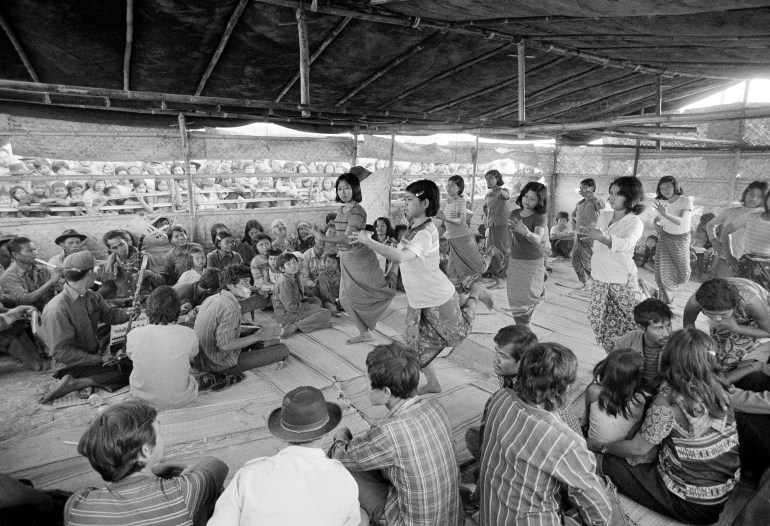
Escaping reality online
But as Nourn neared the end of high school, her courses started to get more challenging. With the violence at home, she struggled to concentrate. It became more and more difficult to care about grades and school and sports.
Nourn’s parents, however, continued to have high hopes for her schooling. Her stepfather hoped to see her in college one day. Personal computers were exploding in popularity in the 1990s, so to help her with her school work, Nourn’s parents set her up with her own system: “one of those big screens with the big modem”.
Through America Online (AOL), the internet access service she used, Nourn discovered instant messaging and chat rooms. She knew that the people she met weren’t always who they said they were — but that was the point: to escape reality. “You could pretend to be anyone you wanted to be.”
There, in those online spaces, Nourn could feel wanted. There, she could feel less alone. “Unfortunately,” she says, “that’s how I met my co-defendant.”
Nourn was only 17 years old when she met Ronald Barker, a married Vietnamese man 17 years her senior, in August 1998. In a recent interview with Al Jazeera, Nourn avoids using his name: she refers to him simply as her “co-defendant” and the man he killed their “victim”.
Over the internet, Barker claimed to be in his mid-20s. But seeing him in person, three days after connecting online, Nourn realised he was much older; at first, she suspected he might even be in his 40s. Barker was sensitive to the age difference, too. He insisted that Nourn keep their relationship a secret, that her parents wouldn’t approve.
Still, Nourn and Barker grew intimate quickly. They started to see each other every day. He told her the things that she longed to hear: that he loved her, that he wanted to marry her. He neglected to mention his pregnant wife and child at home.
“All I knew is that the one thing I wanted was just to break free from my home,” Nourn says. “And to live my life and share it with someone that I felt would love me.”
But the verbal abuse in their relationship began right away. Barker started to dictate what Nourn could wear, what time she should come home from school, and how she spent her free time. Barker had her trapped in a cycle of control and coercion, submission and compliance.
“To be frank, I was used to it,” Nourn says, referencing her upbringing. “I thought I could handle it.” She reassured herself, “As long as he does not put his hands on me, then I’m fine.”
That autumn, shortly after she turned 18, Nourn started working after school as a telemarketer at the dating service Perfect Match. She and her boss David Stevens — a 38-year-old divorcee and former state champion wrestler — became close. They went on a date in December 1998. But according to court documents, as she drove herself home that evening, Nourn noticed a car parked near her house. It was Barker.
Nourn told a defence psychologist that that night was the first time Barker beat and raped her, furious that she had had sex with another man. Calling her “used goods”, Barker demanded that she take him to Stevens’s apartment. Fearing for her life, she complied.
Posing as Nourn’s brother, Barker used Nourn to lure Stevens out for a drive. Then, as they pulled over on the side of a lonely road, Barker pulled out a gun. He grabbed Stevens by the neck. Over Nourn’s pleas of “no, no”, he shot Stevens twice in the head. He lit Stevens’s car on fire with his body still inside.
‘Every day was survival’
Three years later, the murder of David Stevens remained unsolved. And Nourn still lived in fear of Barker’s abuse. He had beaten her. Shot at her. Choked her until she had passed out. And if she tried to leave, he threatened to kill her and her family. Nourn says he forced her to undergo two abortions against her will.
By that point, Nourn had moved in with Barker and his wife: Barker explained her presence by saying she was the daughter of a family friend, in need of a place to stay. Nourn suspects his wife never questioned the arrangement because she was being abused too.
“Every day was survival for me,” Nourn recalls. She had started working at a mortgage company, where her colleagues noticed the bruises on her arms and legs.
“Of course, I would lie and say, ‘Oh, I fell in the shower, bumped into a chair,’” Nourn says. But one of her colleagues pulled her aside and said, “Chairs and showers don’t do that kind of bruising.” She too had been abused. She too knew the signs.
Nourn confided in her coworkers that she feared Barker would kill her. She knew he was capable of it. But her colleagues didn’t understand why. So she told them the story of what happened that December night in 1998. Their response was immediate: “You have to tell the police.”
“They were holding my hand when I was talking to the police at my job,” Nourn recalls. “They encouraged me, they supported me, they helped me make that call.” She remembers being taken to the police station and interrogated for 10 hours.
“I didn’t do anything wrong. I just wanted to seek their help and protection,” Nourn says. The next day, she discovered both she and Barker were each charged with first-degree murder. Prosecutors characterised the homicide as a premeditated attack, with Nourn complicit in luring Stevens to his death.
At age 22, Nourn was given a life sentence without the possibility of parole. In handing down the sentence, San Diego judge Frederic Link asserted that Nourn was even more culpable than Barker himself.
“She took this mad dog and led him to the victim in this case,” Link said, according to media reports. “She let him off the leash.” He described Nourn as a “selfish, cold-blooded killer”. She was sent to the Central California Women’s Facility, the largest women’s prison in the state.
“My background being Southeast Asian and a young woman, coming from a poor family and not educated — I didn’t understand that those were factors, especially my co-defendant being Asian and my victim being white,” Nourn says in hindsight.
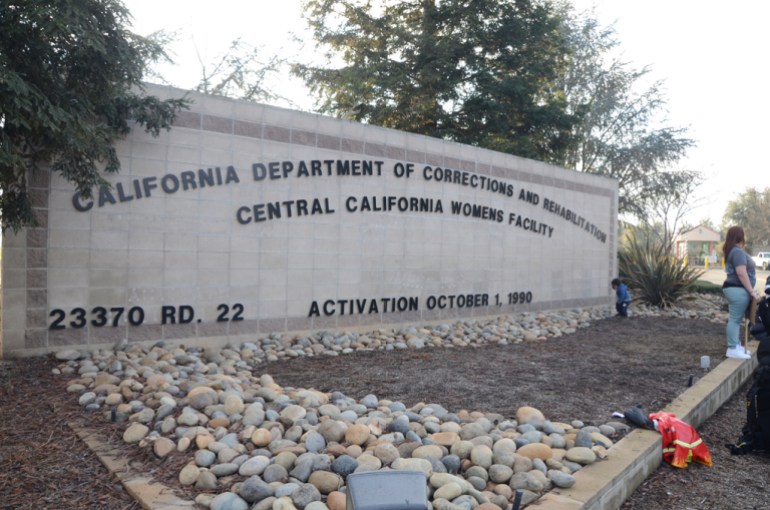
Eventual deportation
But prison proved to be a turning point for Nourn.
All around her, she met women with similar experiences, similar stories, similar backgrounds. Many were domestic violence survivors. It was eye-opening. Even her bunkmate was a survivor, incarcerated after pleading guilty to murdering an abusive boyfriend. An older Black woman, she offered Nourn a shower puff on her first day as a welcoming gift: it had a little animal face sewn into its centre. Nourn still smiles at the thought of it. Having just arrived, Nourn had little of her own, and the smiling shower puff was silly but practical.
Estimates vary as to how many incarcerated women in the US have experienced domestic or sexual violence in their past, but one 1999 study placed the rate as high as 94 percent.
“When you think about who’s locked up, who’s incarcerated, who is serving life for whatever conviction, you can’t imagine an Asian woman, right?” Nourn asks.
She points to stereotypes like the model minority myth, which associates Asians with success, not violence and incarceration.
“You expect someone that’s tatted-up, that has a history of being locked up, being arrested, that used drugs, stuff like that. People that are like gang members. You don’t expect to see women, victims of domestic violence, survivors, being criminalised also.”
In 2006, an appeals court in California reviewed Nourn’s case, citing the fact that her defence failed to investigate the role of “battered women’s syndrome” in justifying her actions on the night of the murder. Pioneered in the 1970s, concepts like “battered women’s syndrome” are increasingly used to explain the psychology of abuse survivors — particularly when they themselves are forced to participate in a crime, like lethal self-defence.
“She was denied her constitutional right to effective assistance of counsel,” the appeals court concluded. Nourn’s sentence was adjusted to a term of 15 years to life. Rather than spend the rest of her life in jail, she could be free by the time she reached her late 30s.
But Nourn hadn’t factored in one thing: her status as a refugee. “Coming to the United States as a permanent resident, with legal status, I thought I had the same rights as any other citizen,” she says with a shrug. It came as a shock to learn she might be deported upon release.
At first, Nourn was in denial. “No, that’s not true,” she insisted to a friend from Thailand she met in prison, who tried to warn her about the possibility of deportation. Nourn hadn’t realised she would be subject to the Criminal Alien Program, a system used by the US Immigration and Customs Enforcement (ICE) to identify and deport non-citizens in the criminal justice system.
As of 2020, 90 percent of individuals targeted by ICE for “enforcement and removal” were non-citizens with criminal convictions or pending charges. In other words, Nourn’s case was not unusual. Anoop Prasad, a senior attorney at San Francisco’s Advancing Justice-Asian Law Caucus, receives a dozen letters from individuals like her every week.
So when Nourn wrote to the law caucus in 2013, it seemed like just another letter in the pile.
Prasad responded with the truth: that her options were limited. There was little he could do to stop her eventual deportation.
“Up to that point, I think only one person who had been sentenced to LWOP [Life Without Parole] had left a California prison alive. And no one with an ICE hold that we knew with LWOP had beat deportation,” Prasad explains.
A new side to immigrant rights
Today’s system of deportation was forged, in part, thanks to a suite of laws passed in 1996, under then-President Bill Clinton. Chief among them was the Illegal Immigration Reform and Immigrant Responsibility Act (IIRIRA) of 1996, which expanded the number of crimes that made immigrants eligible for deportation.
The law also stripped away the ability of immigration judges to exercise discretion in deportation cases. As Prasad wrote in his letter back to Nourn, the law prohibited judges from considering her history as a child arrival or her status as a refugee. It didn’t even matter that Nourn had never been to Cambodia, the country she would be deported to.
Nourn knew her chances of evading deportation were low, even before she received Prasad’s response confirming as much. But she was determined to persevere.
“If the system figured out a way to put me in here, I knew that there’s a way to get me out,” she says. She credits her fellow prisoners with inspiring her persistence. One woman told her she lives not only for herself and her family but to prove that incarceration is not final — something Nourn took to heart.
So she doubled down and kept on writing. And Prasad soon found himself in a lively correspondence with Nourn. “What struck me was just how persistent Ny was. She was just not willing to accept that deportation was inevitable,” he recalls. “Basically for four years, she was nudging us.”
Even more astounding was the fact that Nourn had started lobbying him to represent other women she met in prison too — women who likewise faced ICE detention.
“Even though I hadn’t yet committed to actually taking this on, Ny was already connecting me with and pushing me to take on representation for other folks,” Prasad says. Her organising efforts left Prasad impressed. Her hope started to give him hope.
Still, Prasad had to contend with public sentiment. Even in the immigrant rights movement, he found there was little sympathy for people with criminal backgrounds.
“For much of the last several decades, the immigrant rights movement has tried to focus on this model of respectability, showing immigrants as being law-abiding, hardworking, English-speaking,” Prasad explains.
“There was no blueprint for an advocacy campaign for someone with a murder conviction and who once had a ‘life without parole’ sentence.”
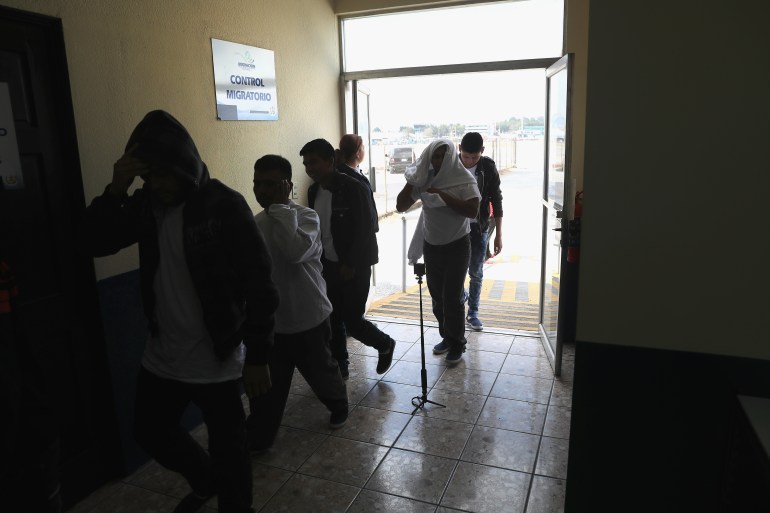
Need for protection
For Kham Moua, the director of national policy at the Southeast Asia Resource Action Center (SEARAC), the complexity of Nourn’s case illustrates how even the most serious criminal offenses deserve consideration before deportation. His organisation advocates on behalf of individuals like Nourn to change federal law and protect immigrants from penalties like mandatory detention and deportation.
“What we’re looking for is not to remove accountability from the actions and the mistakes that these folks made, but to give them the sorts of protections that really any other American has — to give them the ability to redeem themselves legally without facing deportation as a consequence,” Moua says.
He argues that the 1996 immigration laws were hastily passed, without proper consideration of their wide-ranging effects. Not only did seemingly minor crimes — like drug possession and shoplifting — become cause for deportation, but the laws were retroactive. Any non-citizen with a criminal record in their past could be vulnerable. And if a family lost its breadwinner to deportation, the entire household risked spiraling into poverty.
“I think politicians forget that the 1996 laws — IIRIRA in particular — was passed as part of an omnibus. That bill wasn’t passed as a standalone bill. There wasn’t a tonne of time to take it into consideration,” Moua explains.
He estimates that more than 17,000 Southeast Asian Americans have been subject to orders of removal since the 1996 laws passed. Moua identifies closely with that community. Like Nourn, he was born in a Thai refugee camp, his parents having fled Laos during the horrors of the Vietnam War. His family joined the 1.2 million Southeast Asian refugees who have resettled in the United States in the decades since.
“For refugees and for Southeast Asians in particular, we’re here and our communities are here because the US supported armed conflicts or was directly involved in our countries,” Moua says. “Many of these folks, for all intents and purposes, are Americans. People like myself have never known any other country.”
Nourn too had never known any home but the United States. And yet, as her date with the parole board loomed nearer, Prasad, her attorney, held little hope that she could escape deportation.
“I didn’t tell her this, but in the back of my mind, I was also coming up with contingency plans for how to support Ny if she did get deported to Cambodia,” he says. Prasad knew conditions in Cambodia could be challenging, especially for a newcomer with few language skills and no support system to rely on. He had seen cases like hers end with clients stranded an ocean away, deported to a country of which they knew very little.

‘Strip people of their humanity’
Nourn’s parole hearing arrived in January 2017. And sure enough, her parole was approved. But as soon as the prison released her from custody, ICE agents were on hand to shackle her and drive her to the Yuba County Jail.
Prasad remembers receiving Nourn’s prison file after her transfer to ICE. It contained what’s called a “body receipt” — the term used for the paperwork used to document the transfer. “It was literally a receipt for her body,” Prasad says with emotion rising in his voice. “I feel like the system does everything it can to strip people of their humanity.”
Nourn’s new surroundings felt even more hopeless than before. In prison, she had routines, friends and the freedom to work, cook and socialise. She had a community. But in ICE detention she felt isolated, awash in an atmosphere of despair. Stuck in a “module” of 18 bunk beds, Nourn watched as her fellow bunkmates faced their deportations with little cause for hope.
Her chances of ever being set free were slim. Her only interactions with the outside world came in 30-minute increments, across glass dividers.
Still, Nourn kept busy. She gave media interviews, called into panel discussions and led campaign calls to map out a strategy for herself and others. Prasad remembers that it was like having an extra member on her defence team.
She was also keeping up correspondences with outside supporters. One of those letters came from a young man named Nate Tan. Born in the San Francisco Bay Area in the early 1990s to survivors of the Cambodian genocide, Tan had grown up struggling to relate to his Cambodian heritage, just as Nourn had.
“Anytime you bring up Cambodian anywhere, the initial thought is always the genocide, in any US context,” Tan says. He also noticed his peers associated Cambodian people with poverty and gangs. “So in that regard, it was hard for me to find any positive attributions of being Cambodian.”
As a child, Tan observed his parents contending with post-traumatic stress. They had night terrors. Poverty forced them to move from neighbourhood to neighbourhood. And when a notice went out to all parents that an active shooter was on campus at Tan’s school, his parents came running.
“My parents were blowing up my phone: ‘Are you safe? Are you safe?’” Tan thinks that, after losing so many loved ones to genocide, their fear of losing their children was all the greater.
Tan’s first brush with the criminal justice system came when he was in middle school. His younger brother, fearing bullies, had brought a knife to campus. That afternoon, the police arrived at Tan’s house, handcuffed his little brother and placed him in a holding cell at the local precinct.
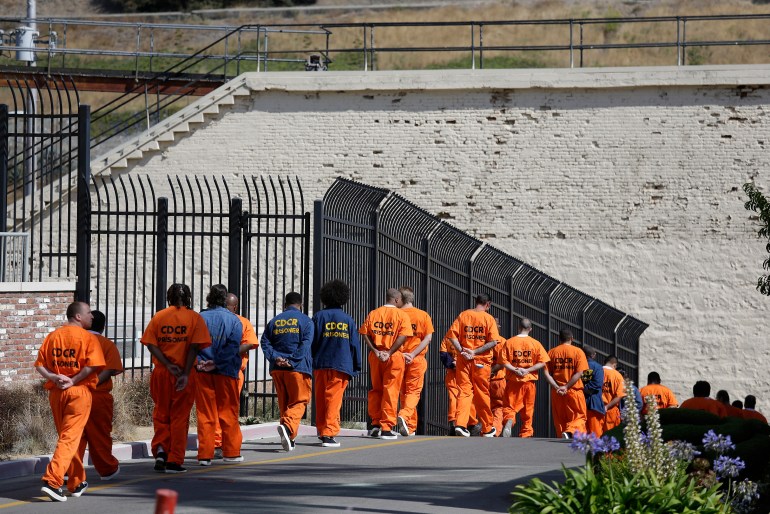
Hope in the Cambodian American community
Early experiences like that inspired Tan to get involved with the Asian Prisoner Support Committee in college. The committee was offering ethnic studies programmes inside prisons like San Quentin State Prison, and Tan signed on. “I’ve probably met more Cambodian people in prison than I have ever,” Tan says emphatically.
He remembers that, on his first day visiting the prison, a man came up to welcome him: “You’re Cambodian? I’m Cambodian!” They grew close, and Tan was excited to learn he was soon due for parole.
But when the parole date came, rather than be released, the man was transferred to ICE detention. “That’s when I knew there was another system ready to inflict another form of violence on my community,” Tan says. “To me, it was a shock.”
Learning about Ny’s story through the activist community, though, gave him hope. It gave him pride. And it came at a time when deportations were at a historic high: in the early years of Donald Trump’s presidency, from 2017 to 2018, deportations of Cambodians alone leapt 279 percent.
Supporters crowded Nourn’s court hearings and celebrated her birthday with a sit-in at the local ICE office. Other incarcerated women were following her lead. Meanwhile, attorney Melanie Kim had joined the team at Advancing Justice-Asian Law Caucus, and together, she and Prasad were exploring novel ways to scuttle Nourn’s deportation.
One strategy involved filing a Convention Against Torture application on Nourn’s behalf, arguing that her life would be endangered by deportation. The other option they pursued was applying for a pardon from California’s governor — a solution that seemed too unlikely to come true.
“When we first started thinking about pardons as an option, pardons were so rare — and pardons to stop deportations were not a thing that really happened,” Prasad says.
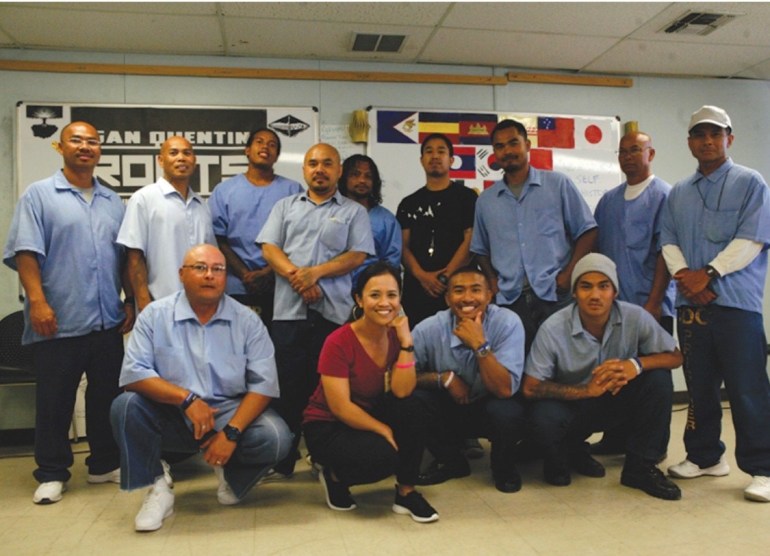
‘Freedom on the other side’
But even when her Convention Against Torture application was granted — protecting her from deportation — ICE appealed the decision. And in the interim, it refused to release Nourn.
On November 9, 2017, Prasad entered a California courtroom to argue for Nourn to be released on bond. He was touched to see the courtroom flooded with her supporters: “A lot of lifers, a lot of folks who had spent time in ICE, people who had done time with Ny, were all in the courtroom, which was just really amazing to see.”
When a judge granted Nourn her bond, Prasad was stunned. “I was still a little bit in a state of shock,” he said. “We just needed to post the bond, and she would be out that day.”
That outcome seemed so unlikely, he and Kim hadn’t even thought to prepare clothes for Nourn.
As they drove to Yuba County Jail to pick her up, Nourn was enjoying her first taste of freedom in 16 years. ICE had already released her into the waiting area, where she could see a door to the outside world. There were no chains. No locks. No barriers. Nothing to cage her inside.
“You could just step out, and that’s freedom on the other side,” she recalls. It felt like a novelty to climb into the backseat of a car without chains wrapped around her waist.
Three years later, in 2020, Nourn herself was working as a community advocate at the Advancing Justice-Asian Law Caucus. She was on her way to a workshop when her attorney — now colleague — Prasad surprised her with the news: the governor of California, Democrat Gavin Newsom, had used his executive powers to grant her a full pardon.
Her first reaction was disbelief: “I’m getting what!?” Pardon applications can take years to process, and typically applicants are only notified if the governor chooses to take action.
Shock washed over Nourn, then joy. With the governor’s pardon, Nourn had protection that no court could overturn — a scenario she faced with her Convention Against Torture application. The Convention Against Torture decision also left her vulnerable to deportation to another country outside of Cambodia.
But the pardon had the power to end deportation proceedings, by addressing the original grounds for her removal: her crime. Nourn no longer had to fear deportation for what happened in 1998. She would no longer have to worry about being separated from her family, being forced to leave the only country she had never known.
Crying and shaking, Nourn called her mother and her siblings to share the news. Her phone started buzzing with messages of congratulations from her well-wishers.
After receiving the paper pardon certificate in the mail, Nourn took to Twitter. “Thank you @GavinNewsom,” she wrote, before asking that he please “grant mass clemency for more people to free them from ICE detentions, prisons, & fear of deportation!”
As of 2022, Newsom’s office has granted 112 pardons total, including to Cambodian refugees like Kang Hen and Hay Hov, whose pardons in 2019 were seen as a rebuke to the Trump administration’s immigration policies. Nourn and other advocates continue to fight for a new law that would prevent state and local governments in California from assisting with ICE deportations.
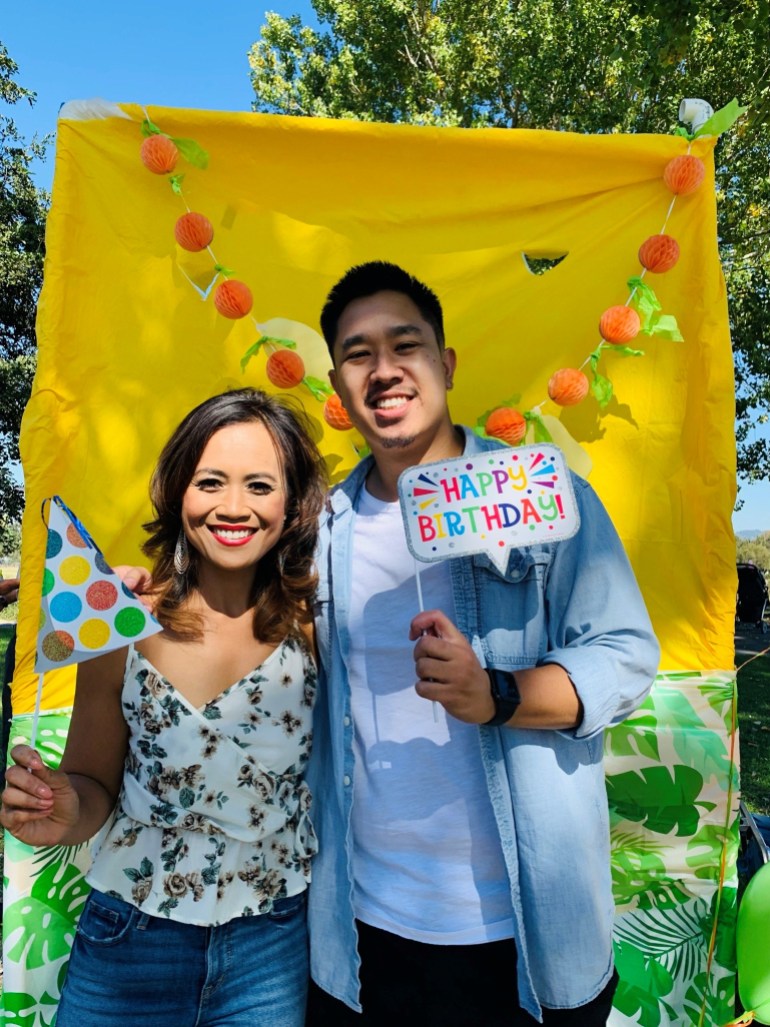
Fighting the deportation machine
Today, Nourn organises on behalf of Survived and Punished, a grassroots group that campaigns to free survivors of domestic violence enmeshed in the criminal justice system. She also got to meet Tan, her former pen pal.
Tan admits to being “a little star-struck” when meeting her in person for the first time. “In the Cambodian community, every so often you hear a story about someone reconnecting with someone they lost during the genocide,” Tan explains. “When I saw Ny, even though I didn’t know Ny before her incarceration, it felt like I was meeting her in a long-lost reunion.”
They now co-direct the Asian Prisoner Support Committee together, which runs prison and re-entry programmes as well as campaigns against deportation. It’s the same organisation that first got Tan volunteering in San Quentin State Prison. Given that the vast majority of prisoners in the United States are men — at a rate of 93.4 percent as of March — Tan says Nourn’s example is all the more powerful for giving voice to a female minority that can feel invisible.
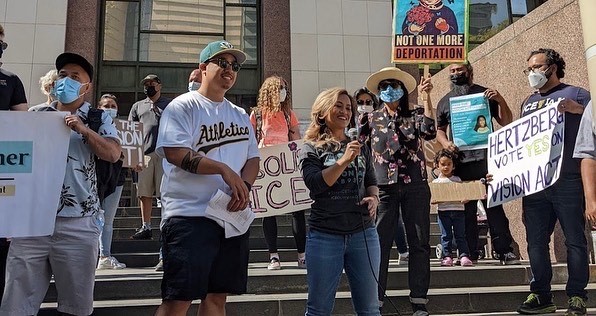
“I have seen so many incarcerated women fight the deportation machine so fiercely, modeling after what Ny did,” Tan says. “There’s a disproportionate amount of support for men. Women do not nearly get the same support. But Ny has really brought forward this fight for incarcerated women.”
Tan knows it’s easy to hate the system that incarcerates so many. It’s easy to be angry. But as far as he can tell, Nourn hasn’t gotten into advocacy out of spite. She does this work out of love for her community: for the abuse survivors whose lives are derailed by violence. For the immigrants doubly punished through prison and deportation.
“She has this deep love for people who have been in situations like hers,” Tan says.
Though she no longer lives with shackles and bars, Nourn insists she doesn’t feel free — not yet at least. “We’re only free until everyone is free,” she says. That’s why she continues to share her story, working for that day to finally come.
From the Afghan woman who fought patriarchy and the Soviets to the mother who taught her daughter what it means to survive and the art of care, we are telling the stories of women – contemporary, historical, in the public eye and overlooked – who are shaping other women’s lives. In 2022, starting from Women’s History Month in March, these are the stories of women who are making a difference to other women.